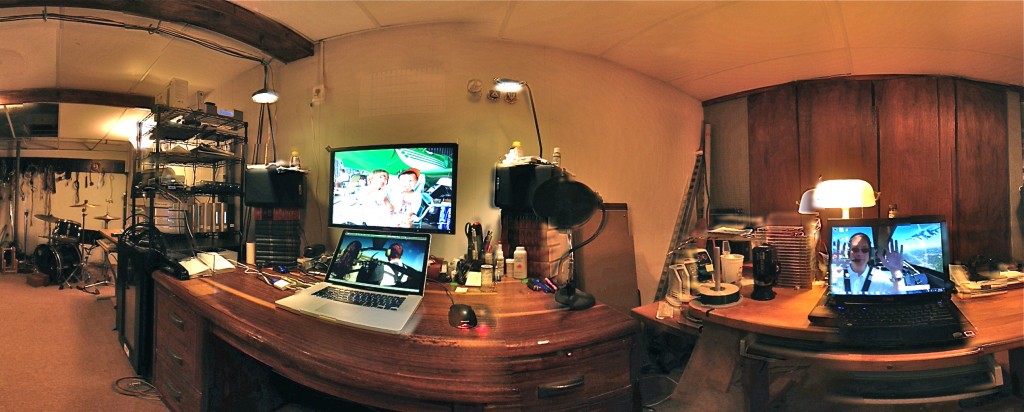The studio reconfiguration is complete! Or at least as complete as it’s going to be until the first Acro Camp movie is complete. I’ve been mucking about for years with the idea of reconfiguring the studio, but never really had time to make it happen. I actually didn’t have the time to do it when I did it, but I found that I wasn’t able to work efficiently on the films or record audio for the show with everything stuffed together.
Late last year, Scott Cannizzaro e-mailed me to say that Noren was selling G-Cabs at ridiculous prices. A G-Cab is a hush box into which you can put your equipment that makes noise (like computers that have cooling fans) so that that noise is reduced (40db or so). The cab has a fan and a lot of baffling, so your equipment still runs cool, even though you can’t hear it. In fact, the only way I can tell that it’s running is the smell of the new sound insulation that the fan blows into the room. Kinda like that “new studio smell.” If you’ve listened to the show for long, the hum of the computer’s cooling fan is ubiquitous. The price on the G-Cabs was so good that I had to get one.
But, of course, the cab is not small. All of that baffling takes space. So the cab, along with the need to reconfigure the workspace to I could get the movies done, formed a critical mass. If you look at the photo above, that’s the G-Cab in the middle of the long wall that makes up the digital side of the studio.
This is a view of the digital side from the work area. The primary workstation is the big desk to the left. All of the hard drives and the MPro Box are on the rack just to the left. The tower PC that I use for spoken word capture and phone interviews is in the G-Cab underneath. Studio monitoring is through a couple of Polk Audio TSi100s powered by the receiver on the analog side of the studio. The Rode NT1 mic on the right is the primary spoken word capture mic. Over to the right is the utility desk. I use my PC laptop there for storyboarding and also for scripts.
For all of the gadgets and other stuff in the pics, this remains a very basic and utilitarian setup. Other than the Mac Book for video editing and music recording and production, the setup has been essentially the same for the last six years. Any improvements have come much more from getting better at using the equipment than from getting better equipment. I get a chuckle sometimes listening to podcasters having impassioned arguments over which oddly-shaped USB mic is best when those same podcasters’ shows suffer catastrophically from poor editorial content that no microphone could possibly help. (Most or all of these podcasters are non-aviation podcasters, so don’t think I’m pointing fingers at friends here.)
So I’m out of excuses. Editing sessions begin anew tomorrow night. Onward!




Speak Your Mind